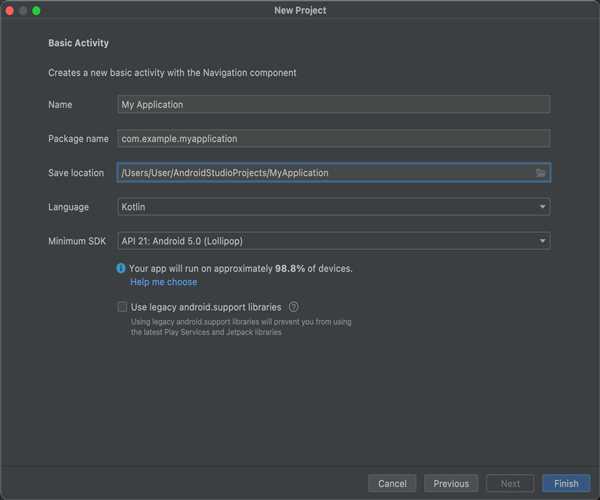To let the current program finish in Android Studio, you need to understand how the program execution works and implement the necessary steps for proper termination. Here are some guidelines to help you achieve this:
Understand program execution: Android Studio follows the lifecycle model for app development. Activities and services have their own lifecycles, and it's important to understand how they interact with each other. This knowledge will help you identify when and where to let your program finish.

Handle background tasks: Android Studio allows you to run tasks in the background through services or asynchronous operations. It's crucial to properly handle these tasks to ensure they complete before the program finishes. Use appropriate threading mechanisms like AsyncTasks, Threads, or ExecutorService to manage background operations and ensure they are gracefully terminated.
Use appropriate lifecycle methods: Activities and services have lifecycle methods that are invoked at different stages of execution. Utilize these methods to handle program termination gracefully. For example, in an activity, you can override the onDestroy() method to release resources, cancel any pending operations, and save necessary data before the program finishes.
Properly handle user interactions: Android apps rely on user interactions, such as button clicks or screen touches. Ensure that you handle these interactions appropriately and avoid premature program termination. Implement confirmation dialogs or prompts to prevent accidental program closures and give users a chance to save their work if applicable.
Register broadcast receivers: Android provides a broadcast system that allows apps to receive system-level events. By registering broadcast receivers, you can listen for events like device shutdown or application backgrounding and perform necessary cleanup actions before the program finishes.
Gracefully handle exceptions: Exceptions can occur during program execution, and unhandled exceptions may result in unexpected program termination. Use try-catch blocks to catch and handle exceptions appropriately, allowing your program to finish without abruptly crashing.
Debug and test thoroughly: Use Android Studio's debugging tools and run comprehensive tests to identify any potential issues or bugs that could lead to program termination. Proper testing helps you catch and resolve problems before deploying your app.
Release resources and close connections: If your program uses system resources or establishes connections (e.g., databases, network connections), make sure to release these resources and close connections properly. Leaked resources or unclosed connections can cause unexpected termination or memory leaks.
Consider user experience: When letting a program finish, it's important to provide a smooth and intuitive user experience. Inform users about ongoing operations and allow them to complete their tasks before the program closes. Avoid abrupt closures that may lead to data loss or user frustration.
Monitor and handle edge cases: Analyze and handle potential edge cases, such as low memory situations or abnormal program termination requests. Implement appropriate mechanisms to handle such scenarios gracefully and ensure a smooth user experience.
By following these guidelines, you can let your current program finish in Android Studio effectively. Understanding the Android app lifecycle, properly managing background tasks, handling user interactions, and gracefully handling exceptions are essential steps to ensure a smooth and reliable program termination. Remember to thoroughly test your app to identify and address any issues before releasing it to users.